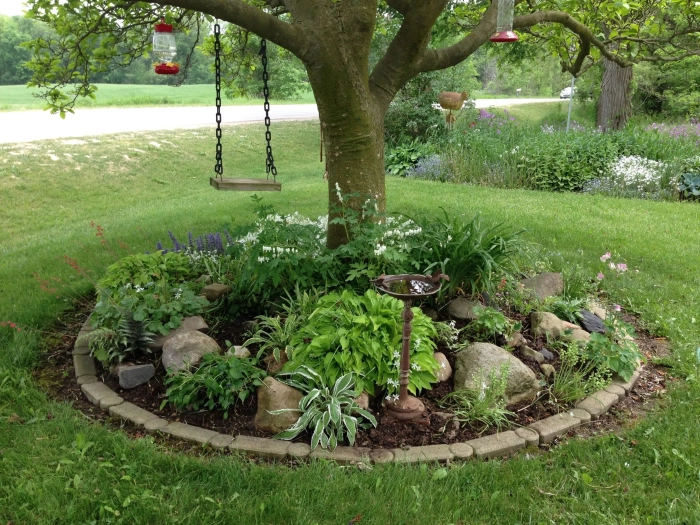Magnolia trees are known for their stunning blooms and graceful appearance, making them a popular choice for landscaping. However, when it comes to creating a landscape around a magnolia tree, there are some important things to consider in order to ensure the health and beauty of both the tree and your overall design.

Understanding the Magnolia Tree’s Needs
Before you start planning your landscape, it’s important to understand the specific needs of a magnolia tree. These trees prefer well-drained soil and require regular watering during their first few years to establish strong roots. They also thrive in full or partial sun, depending on the variety.
It’s also important to consider the size and growth habits of your particular magnolia tree. Some varieties can reach up to 80 feet in height, while others are more compact. Knowing the size and shape of your tree will help you plan accordingly when selecting plants and designing your landscape.
Choosing Complementary Plants
When choosing plants to accompany a magnolia tree, it’s important to select ones that will complement its beauty without competing for resources. Consider planting low-growing perennials or ground covers around the base of the tree, such as hostas or creeping phlox. These will provide a nice contrast to the tree’s height and add texture to your landscape.
Shrubs are also a great option for creating depth and interest in a magnolia tree landscape. Look for varieties that have similar growing conditions and won’t overshadow the tree, such as azaleas or camellias. Additionally, smaller trees like dogwoods or redbuds can make a beautiful addition to the landscape while still allowing the magnolia tree to remain the focal point.
Designing Around the Magnolia Tree
When designing your landscape around a magnolia tree, it’s important to consider its shape and placement in relation to other elements. A common design technique is to center the tree in a circular or oval-shaped garden bed, with complementary plants surrounding it. This creates a visually appealing focal point while also allowing for easy access to care for the tree.
You can also create a sense of symmetry by planting matching shrubs or smaller trees on either side of the magnolia tree. This will help balance out the landscape and create a cohesive look.
Mulching Around the Magnolia Tree
Mulching around the base of your magnolia tree not only adds to the aesthetic appeal, but it also helps retain moisture and suppresses weeds. When mulching, be sure to leave a few inches of space around the trunk to prevent rot.
As for materials, organic mulches like shredded bark or wood chips work well and can also add nutrients to the soil as they break down. Avoid using non-organic materials like stones or rubber, as they can damage the tree’s root system and hinder its growth.
Accentuating the Beauty of Your Magnolia Tree
There are many ways to highlight the beauty of your magnolia tree and make it stand out in your landscape. Consider adding outdoor lighting to showcase its unique form and delicate blooms at night. You can also incorporate a seating area near the tree, allowing you to enjoy its beauty up close.
Finally, don’t forget about the potential of using other hardscape elements such as a trellis, arbor, or garden statue to enhance the overall design and create a focal point in your magnolia tree landscape.
With careful planning and consideration, you can create a stunning landscape around your magnolia tree that will be admired for years to come. So go ahead and let this iconic tree take center stage in your outdoor space, and watch as it adds a touch of elegance and beauty to your surroundings. So don’t be afraid to get creative and experiment with different design ideas to make the most out of your magnolia tree.
Maintenance Tips
Taking care of your magnolia tree is essential for keeping it healthy and thriving in your landscape. Here are a few maintenance tips to keep in mind:
- Water regularly: Magnolia trees need consistent moisture, especially during their first few years of growth. Be sure to water deeply and avoid overwatering, which can lead to root rot.
- Prune with caution: While pruning can help maintain the shape of your magnolia tree, it’s important to do so carefully. Avoid heavy pruning or cutting back too much at once, as this can stress the tree and affect its bloom.
- Fertilize in moderation: Magnolias don’t typically need much fertilization, but if your tree is showing signs of nutrient deficiency, you can use a slow-release fertilizer in early spring.
- Monitor for pests and diseases: While magnolia trees are generally pest-resistant, they can still fall victim to certain insects and diseases. Keep an eye out for any signs of infestation or illness and treat accordingly.

